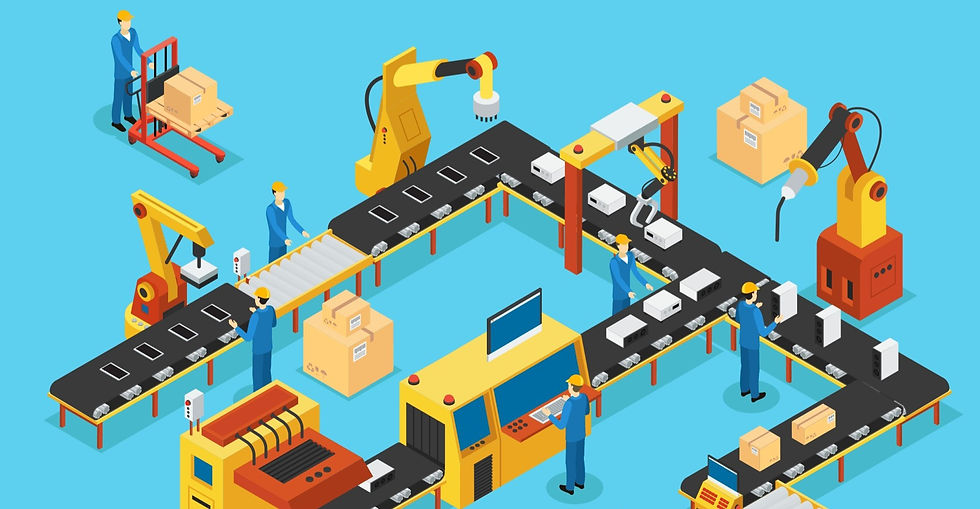Work Smarter - Not Harder
- Doug Ennis
- Apr 10, 2020
- 4 min read

What if IT predicted and replaced equipment before it failed? What if our systems and applications stayed updated? What if a security violation could action thousands of devices into a defensive posture? What if all of this could happen when your IT team was asleep, on vacation or doing the 1 of thousands of other duties requested of them? Sounds like IT magic? IT Automation does kind of seem like magic, something only a wizard or a SkyNet-like AI could successfully deliver. In other words, something that’s out of reach to the average organization. We're happy to debunk the myth that Automation is out of reach. In fact, it’s quite attainable, drives huge efficiency gains, streamlines IT operations, and reduces burdens on end-users. We’ve found that companies who have adopted some manner of IT Automation are far more successful in dealing with rapid adoption of WFH strategies and support of this now remote work force.
Automation is a broad term; automated desktop and application provisioning, automated security, persistent detection and remediation of environment, analytics-based management platforms, and artificial intelligence all fall under the automation umbrella. It can go by many names and acronyms: SOAR, Orchestration, synchronized security, Automation, or IT streamlining. While it’s called by many names and every vendor has a marketed spin on automation, it’s a rapidly maturing area and is transforming IT as we know it. This transformation is changing how technology is used, distributed, and managed in organizations. One of the growing professions in IT is Dev/Ops, whose charter is to drive automation into the technology operations.
The first step down this logical yellow brick road is knowing what the endgame is. Automation in IT isn’t that much different than automation in manufacturing; using metrics, technology, data points, and sensors to evaluate, analyze, correct, and report on performance. While the endgames in IT are different than manufacturing, the questions are similar. What are your goals? What is most important for IT in your business? What isn't working now? What is working? What opportunities should be explored, security of environment, uptime of your services, efficiency of your workers, or just removal of repetitive tasks? Creating focus for your organization is critical knowledge to have in all IT decision making, not just Automation. With this baseline and your IT goals in hand, the automation yellow-brick road truly begins. The following Four stages are the core concepts in delivering Automation to your IT.
Phase One - Identification
This is the fishing net phase, and the larger the net, the more fish you’ll catch. We’re talking data-points still at this level, not information per se. In our manufacturing analogy, these are the sensors tracking the widgets as they move down the line, looking for any defect or anomaly, and phoning home these data points for processing. Each data point is a bread crumb and the following phase organizes these into a trail.

Phase Two – Aggregation
This is the sorting and organization phase, collecting data points and converting them into information. A sensor detecting a deformed widget needs to work in concert to identify the widget, adjust the line, and remove the widget. Similarly, in IT automation, let’s suppose a firewall detects a request to a known malicious site. This data point is aggregated, the user is identified, the computer is identified, and all the breadcrumbs have been assembled. So, what should happen now?

Phase Three – Remediation
Remediation takes this trail of breadcrumbs, analyzes the trail, and launches remediation automatically to correct the event. Let’s take this firewall detection example, how would automation apply? In an automated IT environment that one firewall block would convert into an alert for all other network nodes that this machine is compromised. The automation agent will then restrict it, blocking traffic of the compromised system, and begin deploying specific remediation's to the compromised system. All of this can happen invisibly. However, how invisible should these actions be?

Phase Four – Communication
If a tree falls in the woods and nobody is around, does it make a sound? Well, if your automation is configured correctly, it will. These events need to be collected, labeled, and reported on to have a full view of your IT ecosystem. A critical phase to automation is creating visibility to the environment. This is where exponential level efficiencies can be found. Yes, you can be efficient by automating tasks and remediating issues programmatically. However, with detailed visibility into your environment, you can see what systems are prone to failure or prone to security issues, which users require more training, and which users could benefit from new hardware.

Many of you reading this have some portions of these phases implemented. These are some questions to ask if you’re wondering how successful you are at Automating IT.
Is deploying new desktops and applications a burden?
How long does it take to deploy new technologies and applications?
What is the patch compliance of your environment?
Do machines often fall out of compliance?
Do you have inventory, auditing, and current state of your environment at your fingertips?
Are there user self-service portals for applications, resources, and support?
Are you converting issues and analysis into programmatic repeatable tasks?
How many different systems, interfaces, or portals are needed report on this information?
Automation adds value to your IT ecosystem in several ways.
Reduces the number of manual tasks performed
Promotes a healthier (self-healing) environment for your users
Negates problems before they occur or spread
Automation is not some secret form of magic, and your organization can begin adopting aspects of automation today. If you are unsure of where to start, feel free to start by reaching out to OBC to see how Automation can transform your environment.




Comments